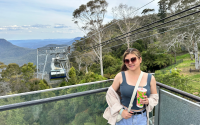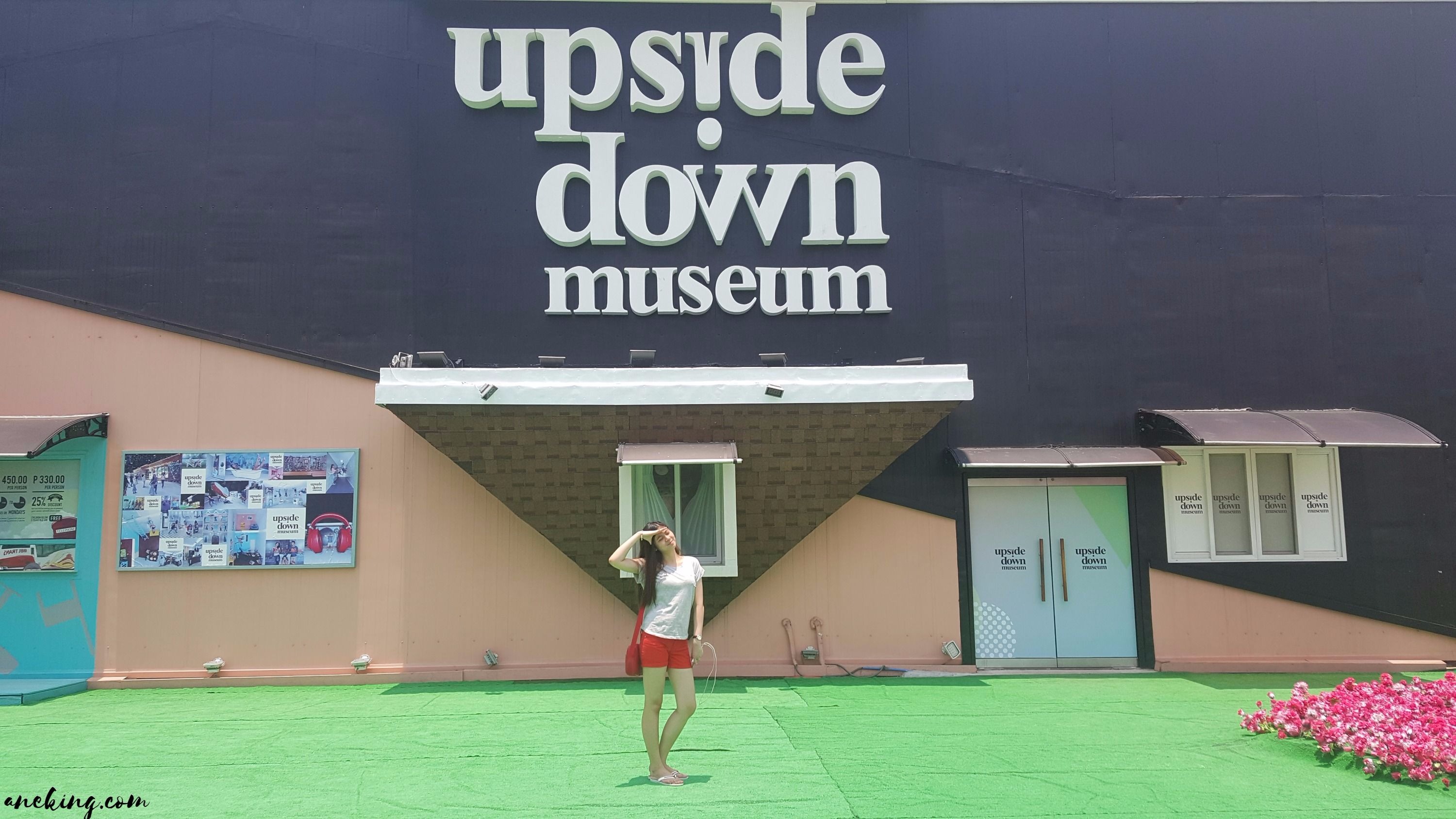The Seven Hells Of Beppu
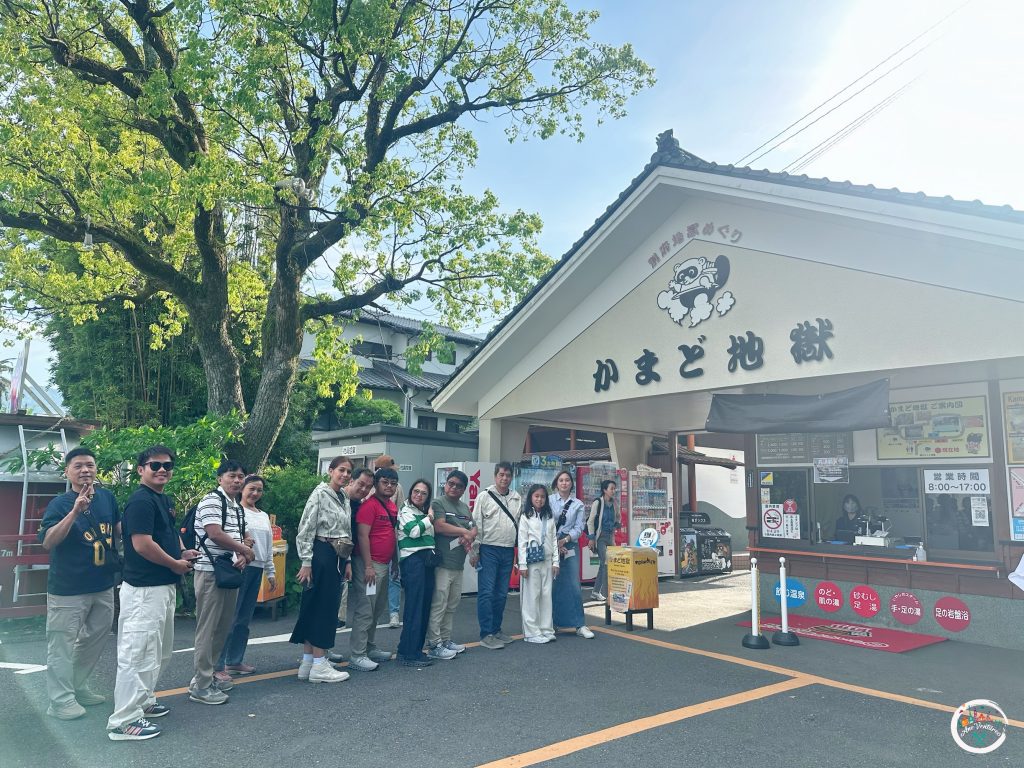
On our second day exploring Kyushu, we booked a day tour via Klook that included stops at Dazaifu Shrine, Yufuin Floral Village, and one of the most unique attractions in the region, Beppu’s Boiling Hell Hot Spring, also known as Beppu Jigoku.
When I first heard the words “hot spring” in the itinerary, I thought we were going to enjoy a relaxing dip. But as it turns out, these hot springs are strictly for viewing and not bathing. What you see here are dramatic displays of geothermal activity like steaming ponds, bubbling mud pools, and sulfur vents that make you feel like you’ve walked onto the set of a science documentary. It honestly felt more like a school field trip.
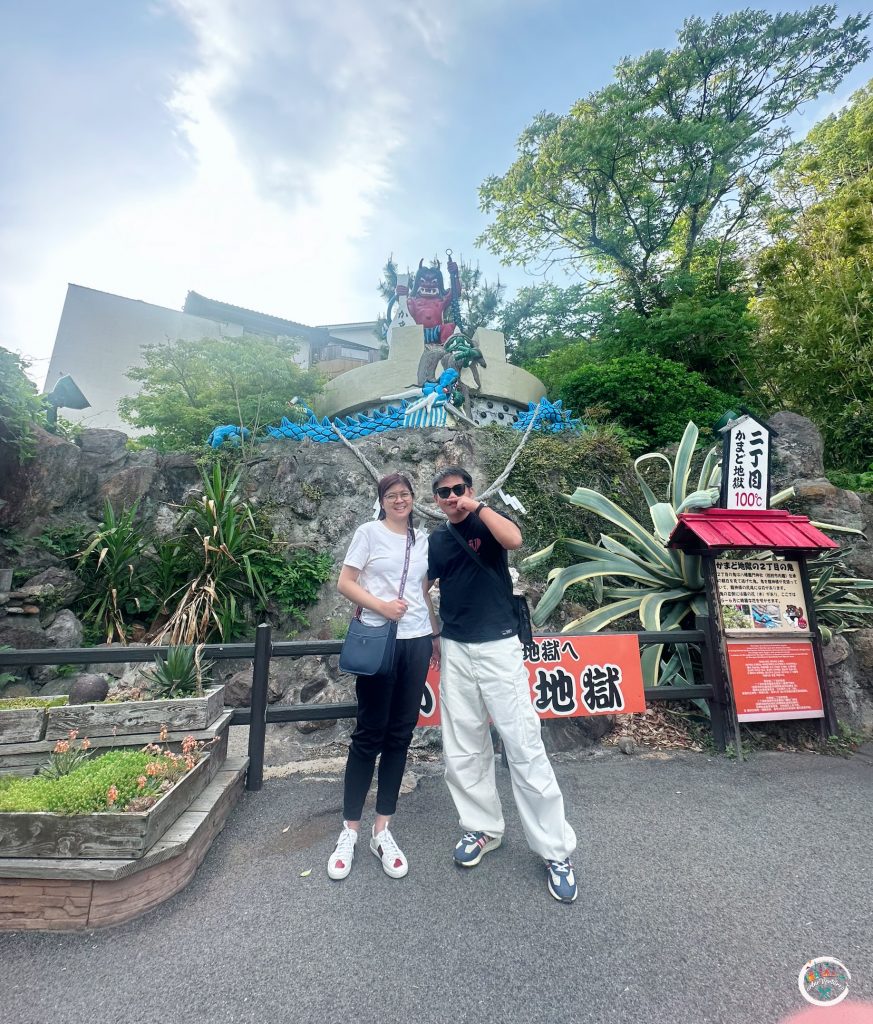
The seven hot springs are the Sea Hell, which features a cobalt blue pond, Blood Pond Hell, which is known for its striking red pond, Monk’s Head Hell, consists of bubbling gray mud pools, Cooking Pot Hell, which is famous for its sulfurous steam, Demon Mountain Hell, which is home to a colony of crocodiles, white pond hell, which displays milky-white waters and Geyser Hell, which features regular eruptions of hot water.
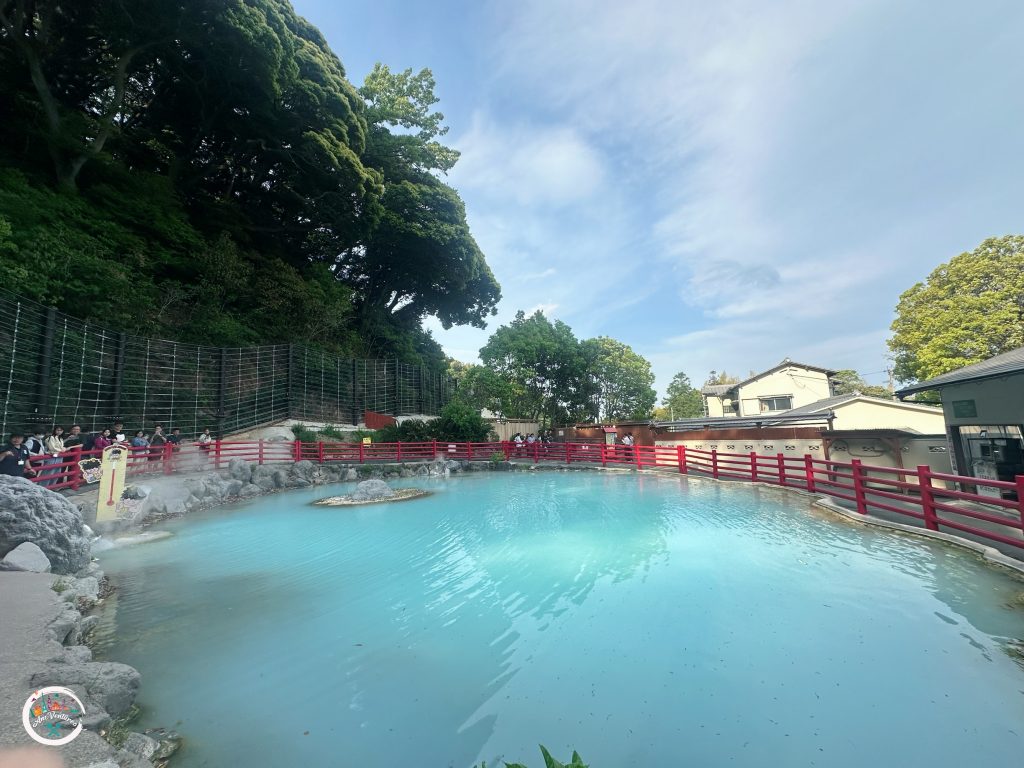
Sounds interesting, right? But honestly, during our visit, I wasn’t entirely sure which ones we actually saw. Our guide didn’t explain much in English, and it turns out we only visited Cooking Pot Hell and Demon Mountain Hell. The rest seemed like miniature versions or themed ponds as if they’re samplers of the other hells. I wish the experience had been more foreigner-friendly, especially for non-Japanese speakers.
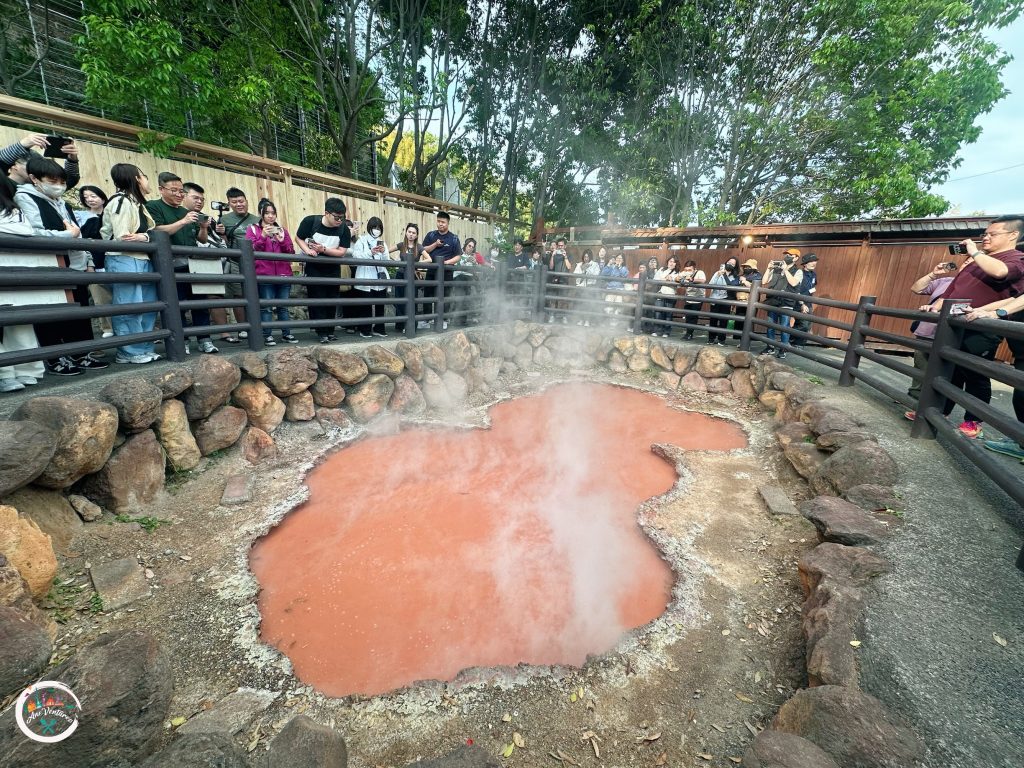
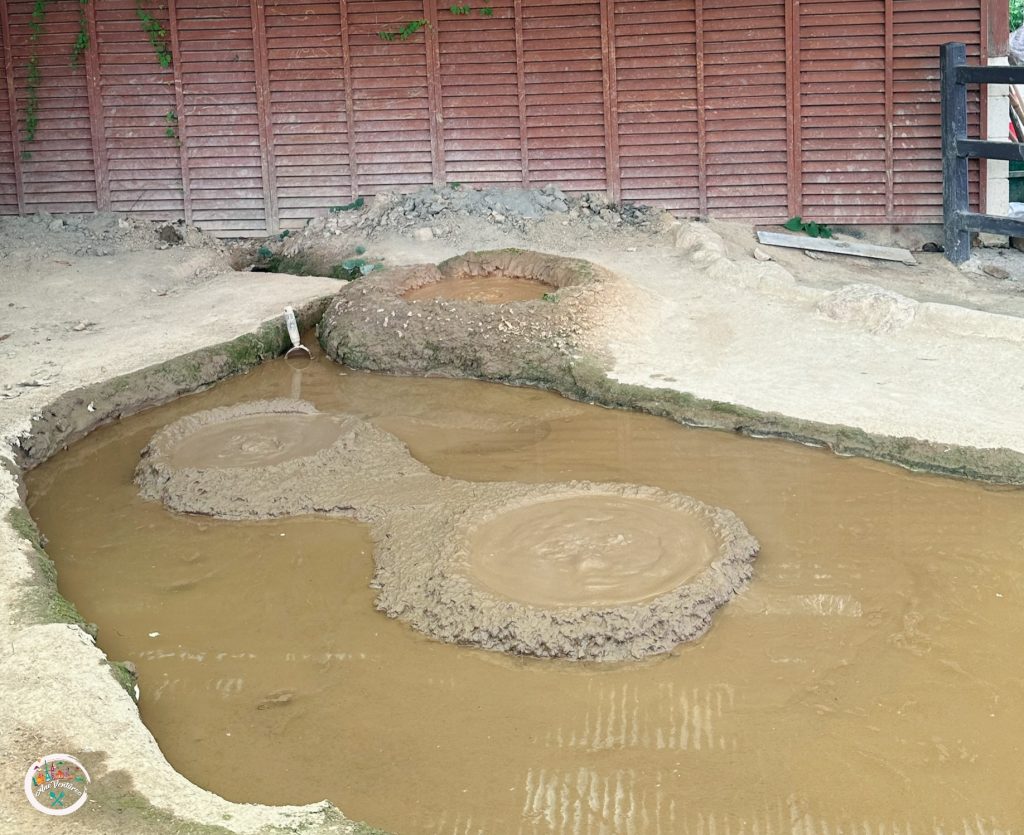
Since it was Golden Week, many local tourists were also there. They seemed thoroughly entertained by the guide’s jokes and antics, especially when he blew on the steam to make it puff dramatically. However, it looked more like a hidden air machine was doing the trick. We just stood there confused, laughing mostly because we didn’t understand a thing.
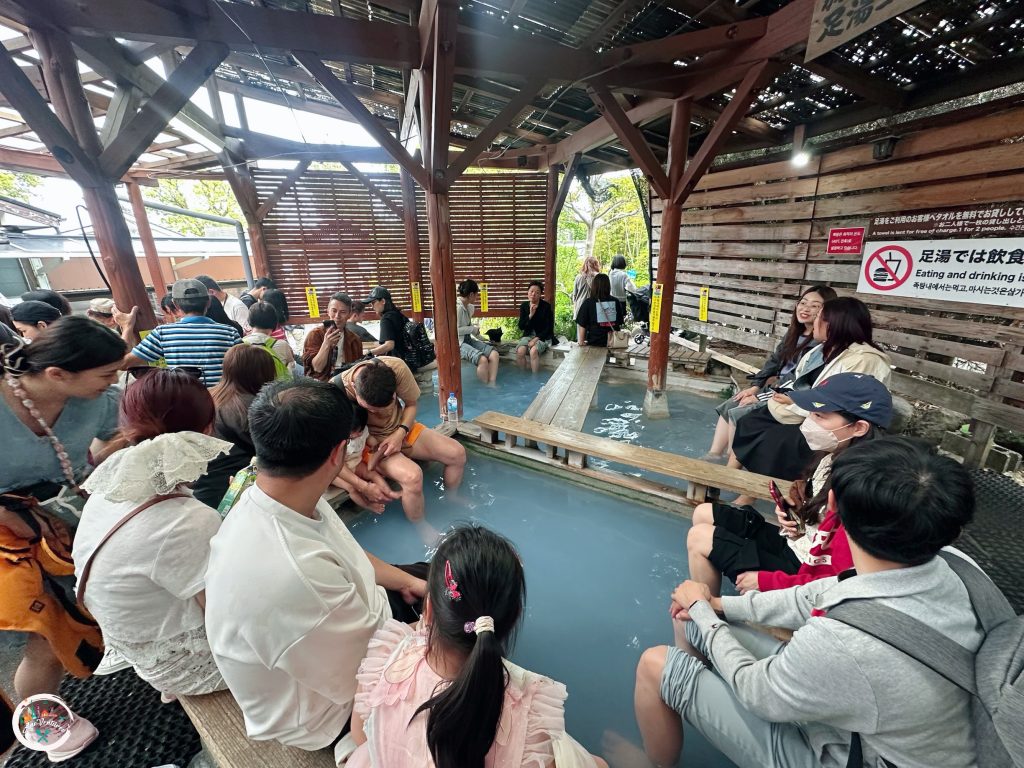
There were also foot baths available for visitors. They were said to be good for treating rashes and burns. But to be honest, I didn’t feel like risking it. The foot bath was crowded, and I couldn’t shake the thought that if someone had an open wound, it could spread bacteria. Plus, the water wasn’t as hot as I expected when I tested it with my hand.
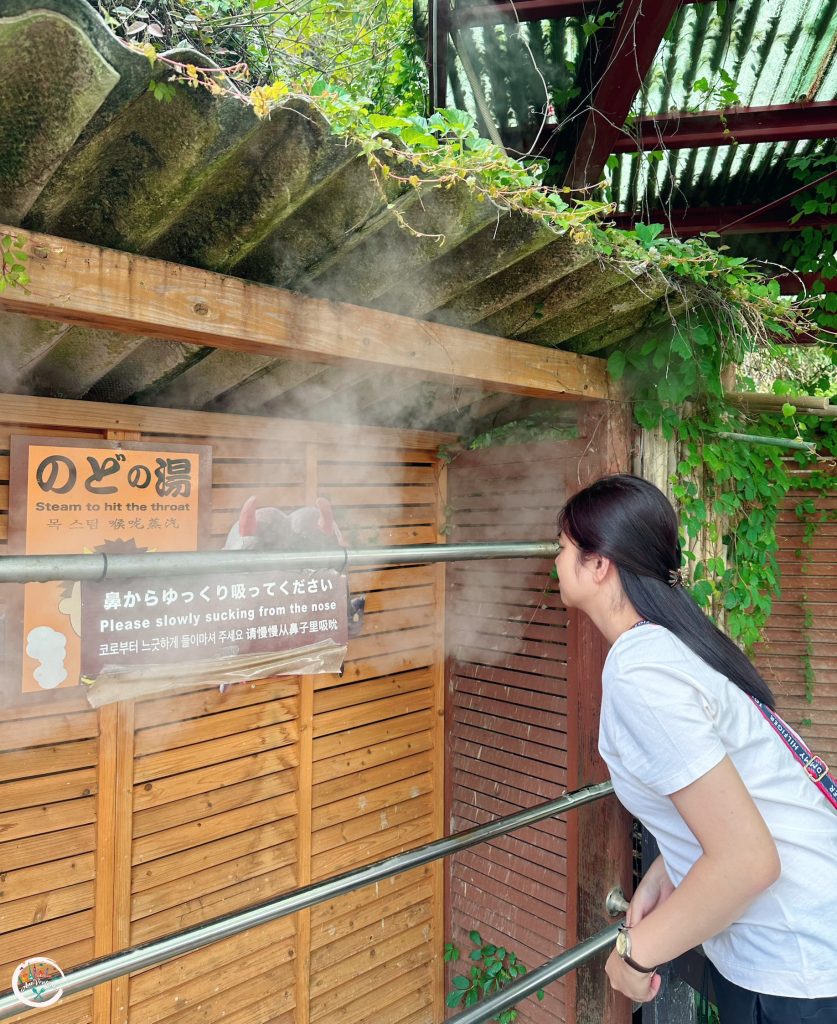
Beppu’s hot spring steam can indeed be used to warm and soothe the throat. Several onsen facilities in Beppu offer areas specifically designed for inhalation, allowing visitors to enjoy the steam directly, which can moisturize and warm the throat. I couldn’t believe that they thought of making inhalation stations for guests. I had a try and felt that the steam was too hot for me to handle.
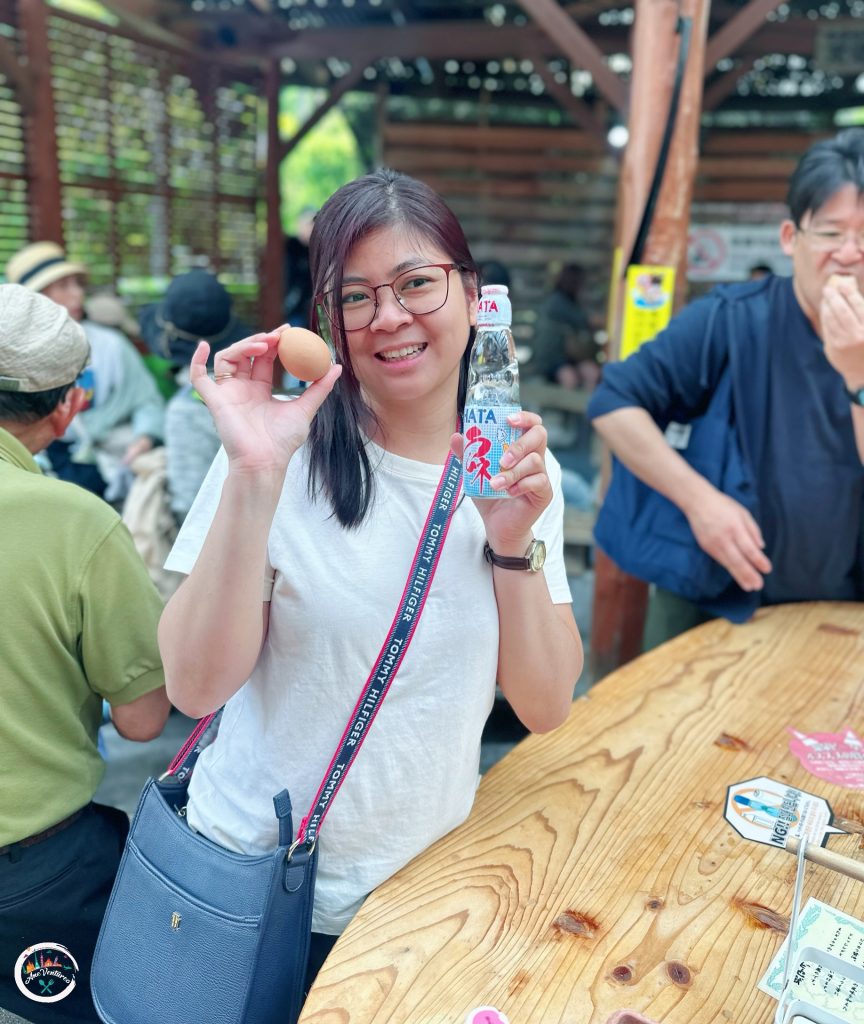
The onsen-cooked eggs were the highlight of our visit at Beppu Jigoku. These eggs are boiled in hot spring water for hours, resulting in a slightly brown shell and a taste that’s soft and pudding-like, with a hint of sulfur. We also had the strange drink called Marble Lemonade. It might sound odd, but I genuinely enjoyed it. You can also buy snacks and cook them using the natural steam.
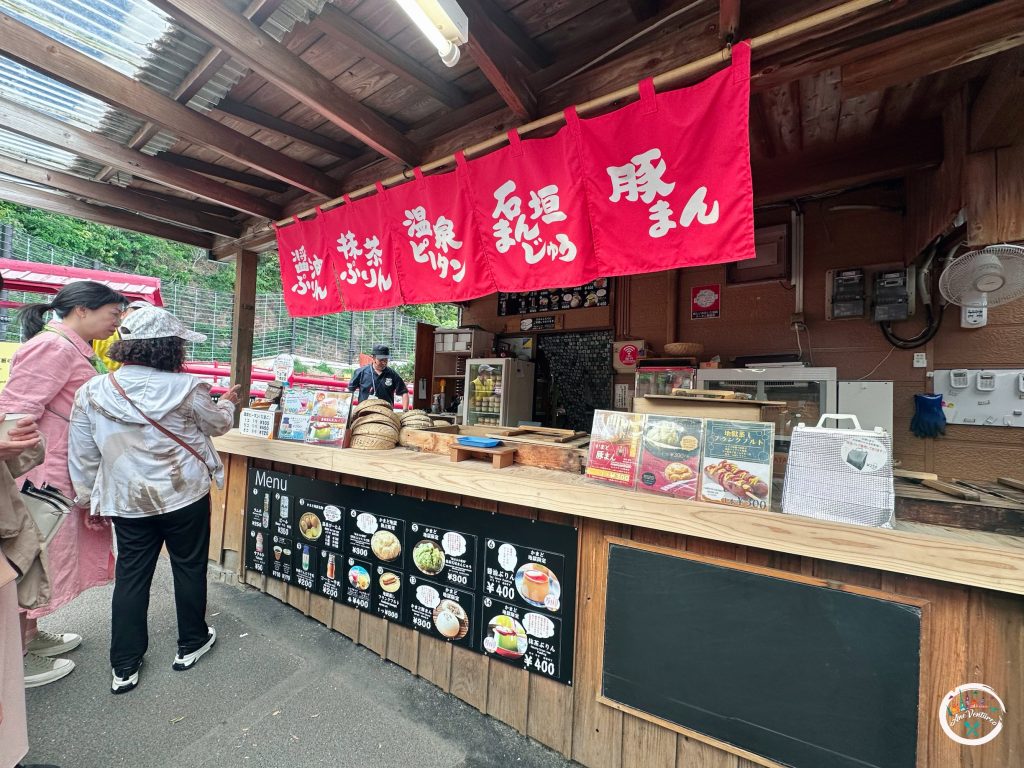

If you’re not up for DIY cooking, there’s a small food stall nearby offering treats like Red Devil Soft Ice Cream and green tea pudding, which are great for a quick break. There’s even a souvenir shop with quirky finds like Yuzu Kosho Soy Sauce, bath powders, and face masks made from hot spring minerals, though I’m a little skeptical about how effective they are.
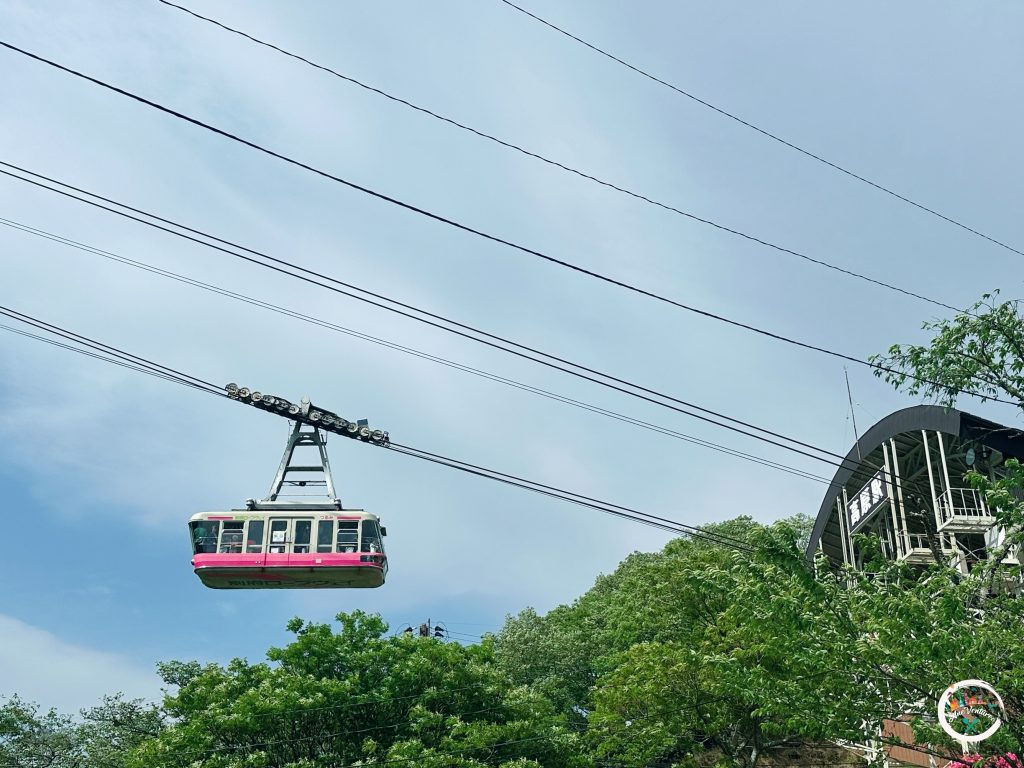
Part of our tour included an optional gondola ride from Beppu-Kogen Station to Mount Tsurumi, the source of Beppu’s geothermal activity. It’s the largest ropeway in Kyushu, carrying up to 101 passengers with panoramic views of Mount Yufu, the Kuju Mountains, and even Shikoku on clear days. They say that the view from the summit is beautiful and makes for a terrific photo opportunity.

Since the gondola ride came with an extra fee, we decided to skip it. While waiting for the other participants, we found joy in the food stalls near the station. One cheerful ice cream vendor convinced us to get matcha soft serve even on a chilly day. We had bo regrets though. It was delicious! It wasn’t too earthy and bitter, which I prefer for a matcha ice cream.

As we were leaving, I noticed steam rising from vents on rooftops and sidewalks. At first, it looked like the city was on fire, but I soon learned that these steam vents are necessary to prevent pressure from building up underground. Beppu has more than 2,900 geothermal vents, releasing over 130,000 tons of hot water every day!
Even if the experience wasn’t what I initially expected, Beppu’s Boiling Hell gave me a fresh perspective on how locals have embraced and adapted to the natural power beneath their feet. It’s not your typical tourist destination but if you’re into science, geology, or just curious sights, it’s definitely worth a visit.
More about our Fukuoka 2025 trip:
- Aso Mountain: On Top Of Japan’s Most Active Volcano
- Yufuin Floral Village: The Studio Ghibli Village In Japan
- Park-hopping in Fukuoka City
- Momochi Beach: The Jewel Of Fukuoka City’s Coastline
- Nanzoin Temple: The Home Of The Reclining Buddha
- Best Of 7 Eleven
- Best Of Bon Repas
- 洋風食堂枝: A Long-Loved Western-Style Restaurant In Fukuoka City
- Kichigo: A Taste Of Karaage Grand Prix’s Gold
- Ikinari: Ready For Steak Off
- How I Make Melon Ice Cream Soda
- How I Make Peruvian Fries Burger
- How I Make Mackerel Sushi

